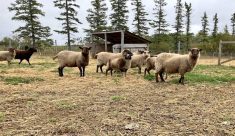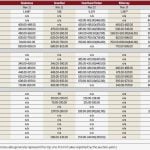The Western Livestock Price Insurance Program is basically the same as buying put options on the Chicago Mercantile Exchange feeder cattle futures. However, this program offers a price in Canadian dollars and also provides a basis for the local region.
Producers should know their costs to determine how much coverage they need.
Here’s a basic example of how it works:
In April, a cow-calf producer plans to sell 600-pound calves in September. The forward expected price is $1.88 per pound and the producer wants to lock in 95 per cent of that price — $1.78 per pound. The premium for this price level is $0.03 per pound, so if the producer has 100 calves expected to weigh 600 pounds each, the total premium cost would be $1,800.
Read Also

Mosquito-borne virus could be devastating to sheep breeding operations
Cache Valley virus, a mosquito-borne disease that infects small ruminants, could be a devastating hit to small operations.
In September, the feeder cattle index for the region for the 550- to 650-weight category falls to $1.68 per pound. The producer would receive $0.10 per pound or $6,000. (If the price is higher than $1.78, then there is no payout.)
Experienced marketers may find an outright short futures position more advantageous because it provides more of a correlated hedge for 100 per cent coverage. However, with WLPIP, there are no margin calls after paying the initial premium. When a producer has a short position on a futures contract, there will be margin calls if the market continues to go up.
Another strategy is to buy put options on feeder cattle and sell out-of-the-money call options. This is essentially equivalent to a short position on the futures market but the margin calls are only necessary if the futures move above the strike price of the out-of-the-money call option.















